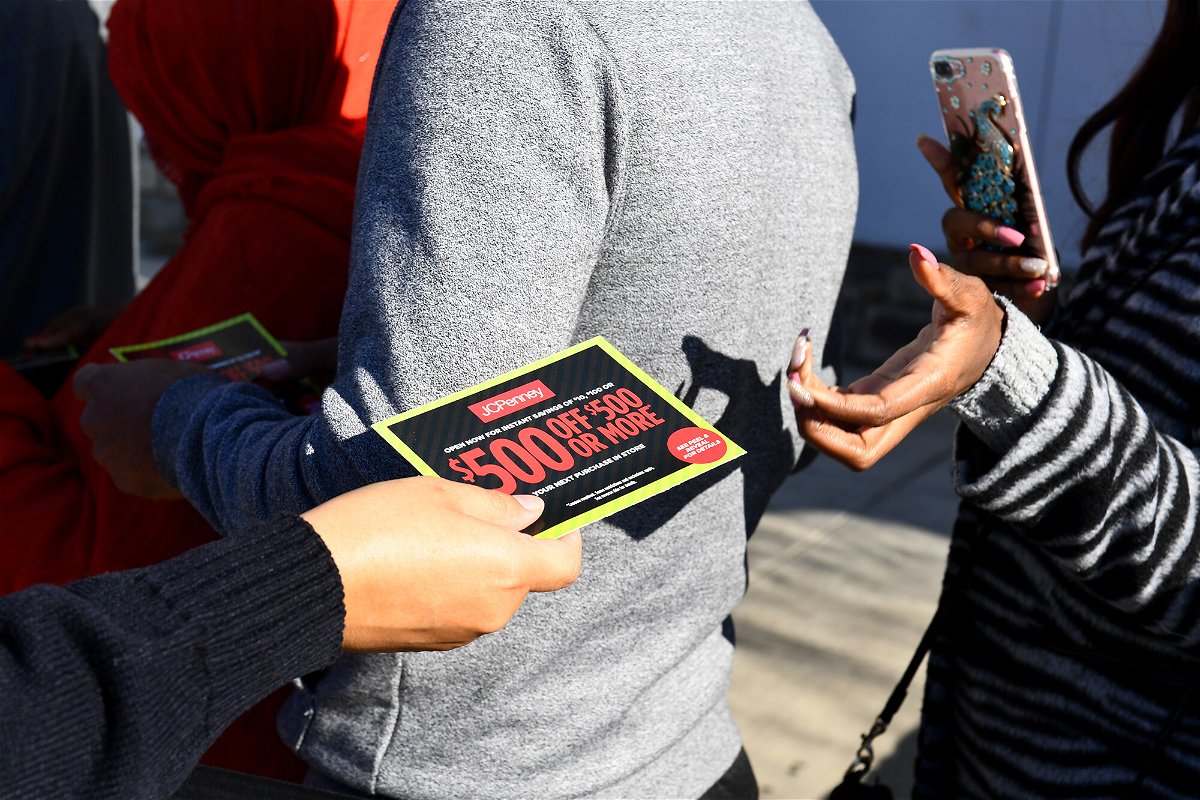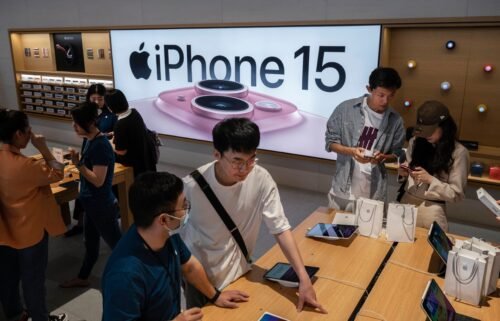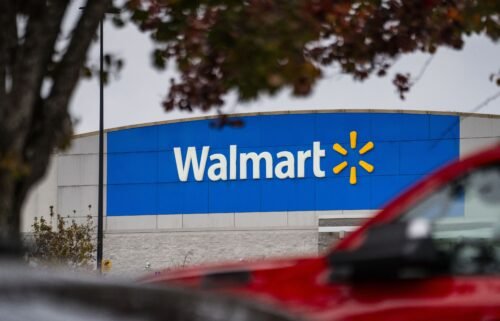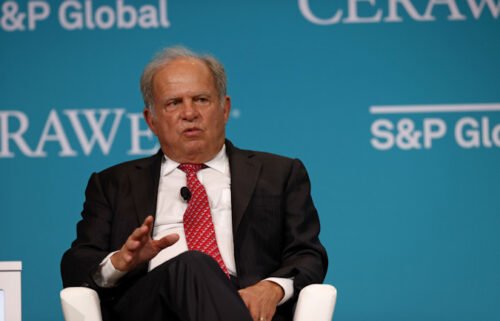JCPenney and Tide tried to get rid of coupons. It was a disaster

J.C. Penney employees hand out coupons to those waiting to get into the store on Thanksgiving Day November 23
By Nathaniel Meyersohn, CNN Business
Clipping coupons is an American pastime. Reality shows devoted to extreme couponers have become sensations. But many companies that issue coupons hate them.
Critics say coupons are expensive, wasteful and inefficient advertising. Some companies have gone to great lengths to get rid of them.
It didn’t end well.
A devoted base of shoppers loves the hunt of clipping coupons from newspaper booklets and, more recently, on their phones. Many will buy products solely on the offers they can find.
Redeeming coupons makes shoppers feel smart — like they’ve outfoxed a brand — and gives them something to brag about to their friends. One study found customers who received coupons released feel-good oxytocin hormones and their heart rates decreased.
“If you can go into the store and walk out getting paid — some people chase that,” said Jessie Alonzo, who runs the coupon blog MoolaSavingMom.com and shares coupon strategies with followers. “It’s like a high.”
In the grocery industry, 865 million coupons were redeemed last year, according to marketing and payment services’ firm Vericast.
The rise of coupons
Coupons have evolved over the years since Coca-Cola popularized them in the late 1880s.
To promote Coca-Cola to the public, the bookkeeper of John Pemberton — the pharmacist who invented the Coke formula — used a city directory to mail coupons to Atlanta citizens, according to the company.
Later on Asa Candler, founder of the Coca-Cola company, distributed paper tickets for complimentary free glasses of Coke. Within two decades, Coke had handed out an estimated 8.5 million free drink vouchers.
Coupon use took off during the Great Depression. Some of the early distribution methods were newspapers and women’s magazines, according to the Association of Coupon Professionals, a trade group for the industry.
As chain supermarkets expanded in the 1940s, coupons became a widespread practice. The introduction in the mid-20th century of direct mail coupons and freestanding inserts in newspapers also propelled their popularity.
By the 1970s, 65% of US households were clipping coupons, according to the trade group.
Printed inserts in newspapers were the most-used coupons for decades, but the rise of online shopping and smartphone apps made digital coupons more popular.
Coupons vs. sales
Coupons are different than products on sale, price promotions or discounts at the store. Sales are available to all customers when they walk in or buy online. But brands target coupons in mailings and websites to reach the shoppers who are fiercely loyal to them.
“Coupons play an important role giving brands a chance to reach and activate shoppers who aren’t making a brand choice” based on sale prices on shelves, said Aimee Englert, executive director of client strategy at Vericast. “Coupons help get a brand on the shopping list.”
Brands also dangle coupons whenever they introduce new products to spur shoppers to test them. Sometimes, companies also offer coupons to push shoppers to sign up for their loyalty programs.
Coupons are expected to play a bigger role for shoppers as prices remain high. Sixty percent of shoppers said they were looking for more coupons to offset higher prices, according to an online survey of more than 1,800 customers in July by Vericast.
“We are starting to see customers engaging in coupons a little bit more aggressively than before,” Kroger CEO Rodney McMullen said on a call with analysts Thursday.
Coupon fails
But coupons aren’t loved by everyone.
Brands and retailers dislike them because they prime shoppers to only buy products at deep discounts, making it harder for them to sell their merchandise at more profitable full-prices.
Companies have said offering coupons is a waste of money that would be better directed toward dropping prices across the board or investing in improving their products’ quality. Some companies have even likened coupons to a drug.
“You’re taking money and you’re essentially paying the consumer to buy your product,” said Kimberly Whitler, an associate professor at the University of Virginia’s Darden School of Business and former marketing executive at David’s Bridal and PetSmart. “It’s taking away resources from building longer term, more sustainable equity in the brand.”
Coupons also can create challenges in predicting demand and keeping products in stock. It’s much simpler and easier on operations to keep prices consistent. What’s more, coupons cost money to design and produce, and some customers redeem expired coupons or fraudulent ones.
“The first time you do a coupon, it’s awesome because it’s incremental,” Whitler said. “The problem is now it’s baked into your base. You have to maintain that coupon.”
But most brands have decided coupons are a necessary evil and remain a part of their pricing strategies. They’re afraid to eliminate them for fear of driving away customers or losing business to competitors that keep them.
Retail history is littered with cautionary tales of brands that tried to quit coupons and failed.
In 1996, Procter & Gamble, the maker of Tide, Crest and Bounty, experimented with a “zero coupon test” in three upstate New York markets where stores had opted to offer customers double or even triple the value of the manufacturer’s coupons. P&G said it would pass its savings on marketing costs to consumers in the form of lower prices.
“More than 300 billion coupons are issued annually and less than 2% are being redeemed,” said P&G’s then-chief operating officer Durk Jager. “Some 8 million trees are cut down for coupons annually. About 40% of total coupon spending never reaches the consumer. We decided coupons have to go.”
But P&G’s move alienated loyal coupon clippers in the area and they switched to competitors.
Some of P&G’s competitors also joined the test, such as Clorox and Colgate, and the New York attorney general filed an antitrust lawsuit against the companies. P&G brought back coupons and agreed to pay $4.2 million to settle the lawsuit, along with other manufacturers.
Nine years later, Macy’s (then Federated Department Stores) acquired regional department stores that were known for their coupons and pulled back on them, hoping to wean the customers off them.
But Macy’s abandoned the plan after sales plunged: “Coupons are a religion in the Midwest,” one analyst said at the time.
JCPenney had the biggest coupon misfire.
In 2012, Ron Johnson, the former head of Apple’s retail stores and a Target executive who became the new JCPenney CEO, unveiled a sweeping overhaul of the chain. Central to the strategy was a plan to end coupons and discounts and replace them with low “everyday” prices.
“Rather than inundating the customer with a relentless series of sales, coupons, rebates and retail gimmicks,” Penney shifted to “Fair and Square” prices.
The plan backfired.
Sales tanked nearly 25% in a year and the company’s stock plunged. Johnson lost his job after just 17 months and Penney quickly brought back coupons. “We did not realize how deep some of the customers were into [coupons],” an executive said at the time.
Johnson agreed: “Coupons were a drug.”
The-CNN-Wire
™ & © 2022 Cable News Network, Inc., a WarnerMedia Company. All rights reserved.



